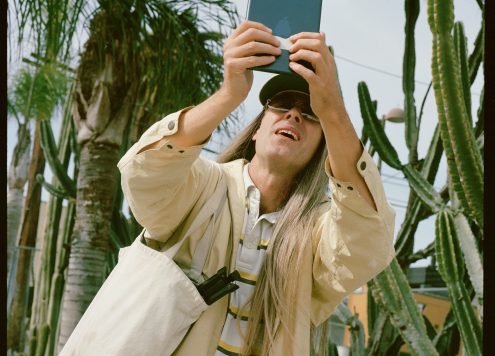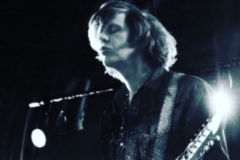Art Feynman — the moniker of visual artist and producer Luke Temple — announces his new album, Be Good The Crazy Boys, out November 10th on Western Vinyl, and presents its lead single, “All I Can Do.” Until now, Art Feynman has strictly been a solo act, a way for Temple to explore surprising sonic landscapes without the burdens of identity. Slightly twisted takes on Kosmische musik, worldbeat, and art pop can be found scattered across the Art Feynman discography, but with Be Good The Crazy Boys, Temple fully immerses himself into pools of collective madness.
Lead single “All I Can Do” swirls in shimmering synth, with percussion and guitar creating a groovy bed for the vocals. “It’s kind of about the butterfly effect we have on our own lives,” explains Temple. “What seems like a mistake in the past or present may inform some kind of success in the future. We are moved through life by much more than we are consciously aware of and most often only through making the mistake and suffering the consequence can the unconscious become conscious. Hence hindsight is always 20/20.”
Unlike the first two Art Feynman albums, Be Good The Crazy Boys was recorded live in-studio with a full band. The result captures a spirit of restless anxiety, and recalls the most frenetic work by Talking Heads, or Oingo Boingo at their darkest. “Sonically, I was inspired by records that were recorded at the late Compass Point Studios in the Bahamas such as Grace Jones’ ‘Private Life,’ Lizzy Mercier Descloux’s Mambo Nassau, and Talking Heads’ Remain in Light.” Despite these callbacks, Be Good The Crazy Boys remains firmly rooted in modern concerns, with songs about fearing the end of the world and struggling with FOMO — narratives that would be relatable if they didn’t sound so completely unhinged.
With Be Good The Crazy Boys, Art Feynman proves to be more than just a character. He represents the part of the modern, collective consciousness that’s struggling to maintain balance in a toxic, chaotic world. In less skilled hands, that concept could result in a very somber listen. Fortunately, when Art Feynman gets his hands on the chaos of the modern age, it simply makes you want to dance.
“To me,” Temple explains, “there was a lot of energy that needed to be released as the result of living in isolation for six years. It also seems to speak to a general anxiety we’re all holding, but it’s expressed in a cathartic way.” It’s this acknowledgement of general anxiety that separates Feynman from the other fictional personas that have been cropping up in the music world lately. Feynman doesn’t sound suave, confident, or even heartbroken in these songs; it sounds like he’s on the verge of a panic attack.
Photo Courtesy: Aubrey Trinnaman










Social Media